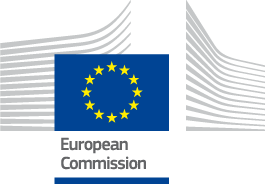These pictures give the first detailed views of the next batch of Galileo satellites, the first of which has already been delivered to ESA for rigorous testing in simulated space conditions.
Aeronautics industries
This is a service contract with the objective of procuring a study to define the needs and functions of a future Galileo Troubleshooting Platform, to identify already existing means developed during the system infrastructure design and deployment and to identify the needs and functions of a future Galileo Integrated Logistics Support Centre.
The European Commission today put forward an action plan for the European Steel Industry to help this sector confront today’s challenges and lay the foundations for future competitiveness by fostering innovation, creating growth and jobs. For the first time since the Davignon Plan of 1977, the Commission is proposing an Action Plan for steel.
The object of the present framework contract is the Operation and related Hosting Services for the GNSS Service Centre. This centre will be deployed and operated in Madrid, Spain. The site, provided by Spain, is subject to a Hosting Agreement between the EC and Spain.
The European Commission is launching the procurement of the GNSS Service Centre. This centre will be deployed and operated in Madrid, Spain.
This contract aims at measuring over time the innovative and technological performance of EU GNSS Industry by setting up and performing the monitoring of its patenting activity vis-à-vis the world competitors in the Global Navigation Satellite System (GNSS) related categories.
The workshop will bring together the European Commission (EC) and stakeholders and enable them to exchange their viewpoints and experience about the European GNSS downstream applications sector.
The first satellite of Galileo’s next phase has arrived at ESA’s technical heart in the Netherlands for a rigorous set of tests to check its readiness for launch.
The brochure Flying New Way – A Boost for European Creativity and Innovation published recently by DG Enterprise and Industry is a short presentation of the great potential of Remotely Piloted Aircraft Systems (RPAS) – commonly known as drones – for civil and commercial applications.
6 new Partner Regions joined the European Satellite Navigation Competition (ESNC) 2013.
Although we enjoy the free movement of goods in the internal market, more than 15 000 national technical regulations can make it difficult for enterprises to sell their products (from bicycles to foodstuffs) in other Member States.
Horizon 2020 is the next Research and Development (R&D) framework programme of the European Union, to be launched in 2014 and covering the period 2014 – 2020. Within this programme, R&D activities shall be carried out in the frame of satellite navigation.
The objective of this public consultation is to obtain input and a broader range of views on the way the European Commission should maximise and ensure the market uptake of GNSS downstream applications and of the European GNSS downstream applications in particular.
The Galileo European Navigation Satellite Service takes another step towards its promising future : UTC time dissemination test successfully passed.
The EC has released a new version of the EDAS Service Definition Document (EDAS SDD).
Who said that Space is boring and isn’t fun for kids? ‘All U Need Is Space’, the first comic strip from the Enterprise and Industry DG designed to bring young pupils closer to the benefits of space applications, is now available in its English version.
For the 10th time, the European Satellite Navigation Competition (ESNC) is calling for services, products, and business innovations that use satellite navigation in everyday life.
On Wednesday 3 April, the President of the European Commission José Manuel Barroso visited the headquarters of the European Global Navigation and Satellite System (GNSS) Agency (GSA) in Prague.
The object of the present contract is to identify and to establish, according to industry accepted practices, a technical verification process for manufacturers of mass market receivers, to have their products tested and to prove that such products can properly use the EGNOS signal.
In its edition dated Winter 2013, SatNav News, the online publication of the FAA, describes the principles of EGNOS.
